MARKET OVERVIEW
The Global Breakfast Drink market will evolve with the pace of changing lifestyles and consumers' increasingly busy schedules over time, empowering these consumers with nutrition that is easy and quick to take. These products will thus provide energy, satiety, and essential nutrients all in small volumes. They will lean toward offering a meal alternative or complement that is similar to other types of beverages but is typically packed with protein, fiber, vitamins, and minerals. Companies in this space will innovate toward producing varieties considering some of the dietary preferences such as plant-based offers, low-sugar alternatives, and allergen-friendly ingredients.
Since breakfast drinks will continue to become part of a consumer's habit changes as nutritional needs and changes in lifestyles dictate global trends, they form part of a bigger food and beverage market. Typically, breakfast drinks comprise products developed to offer an easy alternative to home-cooked breakfasts based on nutrition, quickness, and portability by consumers who seek functional nutrition in the wee hours of the day. The end-user focus on liquid or semi-liquid formats is likely to provide balanced nutrition without requiring any preparation time, particularly under the increasingly time-restricted urbanized conditions every early morning.
This will be pursued, too, in terms of product differentiation along wellness benefits targeted to shape broader consumer trends in personalization. The Global Breakfast Drink Market will therefore not only be limited to conventional dairy or cereal-based drinks, but also expand to different formats like smoothies, protein-enhanced liquids, and fortified plant-based beverages. Technological advancements in food processing will affect these innovations because it will allow more extended shelf life, better texture, and higher nutrient retention while tasting of flavor or altering ingredient integrity.
This makes distribution channels essential in the growth of the Global Breakfast Drink market. Therefore, the retail strategies will evolve as digital technology transforms, laying more emphasis on direct-to-consumer models and subscription services that provide personalized delivery options. Supermarkets, convenience stores, and online platforms will serve as points of contact catering to different segments of the target audience. Moreover, regional preferences and cultural eating habits will also influence the manner in which these products are developed and marketed worldwide.
Marketing efforts in the Global Breakfast Drink market would now revolve around the ingredients used, sustainability, and functional efficiency. Consumers would become even choosier and prize a clearer and more traceable manner of producing and delivering their morning nutrition. In turn, organizations would be working even harder to brand align with social and environmental issues, recyclable packaging, as well as gaining trust and respect through clean-label certifications.
Innovation in the Global Breakfast Drink sector acts not only on consumer convenience but anticipates new preferences arising from health, taste, and sustainability. The market is poised to remain highly dynamic due to new entrants and established players competing for consumer attention through cutting-edge branding, advanced nutrition science, and flexible product lines. Gradually, the Global Breakfast Drink market will turn on its head the way breakfast is perceived, with a broadened scope for what can be considered the first meal of the day.
Global Breakfast Drink market is estimated to reach $19,945.54 Million by 2032; growing at a CAGR of 6.1% from 2025 to 2032.
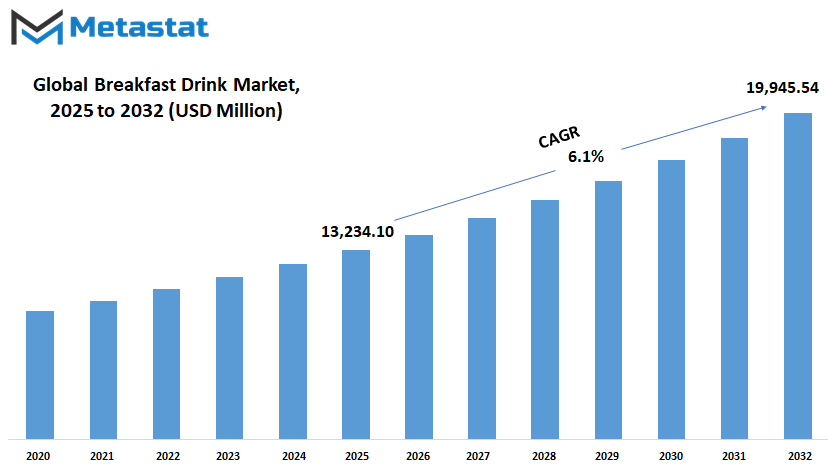
GROWTH FACTORS
The Global Breakfast Drink market will be very lively in the coming years because of the changes in living styles and the increasing interest in health-centered habits. As people keep going towards convenience in just about every aspect of their daily routine, especially during bustling mornings, the demand for quick yet nutritious bits has become much clearer. Breakfast drinks are filling this niche by offering ways to start the day with vigor, without necessarily preparing a full meal. Such changes built into the daily routine will likely increase interest across age groups and regions.
One of the prime movers behind ever-steady growth for this market is demand. Nutrition is generally developed with regard to fast-paced lifestyles, so most people have become very tuned to consuming breakfast products that they can take with them when they are travelling or when they are managing other tasks. A good many people will consider drinks that mix vitamins and proteins with sources of energy to be a helpful substitute for breakfast foods. This trend is strongest among employees and students who find it exceptionally hard to set aside time for breakfast. As many begin to appreciate the necessity of some sort of nutrition to start the day off, growth in the Global Breakfast Drink market will likely continue its fast pace.
Growth is expected from increased health and wellness awareness. Highly health-conscious consumers now read more labels, avoid ingredients they do not consider healthy, and search for additional benefits in what they consume. This trend about well-being gets spurred on added forces for the brands to create fortified drinks with an interesting mix of vitamins, minerals, and ingredients that are known to enhance digestion, focus, or immunity. With that right equilibrium of taste and function, these products will appeal to consumers looking for more than just energy in the morning.
Not all trends add to the growth of this category. Some consumers are finding some breakfast drinks high in sugar content unhealthy, leaving them torn about how to have these products. People are aware nowadays of the long-term effects that high sugar intake brings in one's health, hence the preference on products high in sugar but discarded on shelves. Furthermore, most developing markets lack economical options, making it harder for these beverages to reach wider consumer audiences. Unfortunately, unless brands discover a way to reduce prices without risking quality, it seems that the growth of the market will be slowed down in these places.
Growth looks bright because new low-sugar, plant-based options are coming onto the market, speaking directly to health-conscious buyers. Such innovations could prove to be paradigm shifts for the Global Breakfast Drink market, offering entirely new avenues for the industry to explore as it helps more individuals develop healthy habits from the outset of their day.
MARKET SEGMENTATION
By Type
The global market for breakfast drinks promises a more healthful future. It also offers consumers and manufacturers a lot of opportunities in product development as consumer behavior is molded by convenience and changing diets. As daily routines get more packed and lifestyles require more, the quest for fast but wholesome breakfast options will increase. Breakfast drinks provide a way to have it fast without losing any essential nutrients-a perfect answer to the need for quick breakfast yet healthy ones.
It has different functions among individual consumers, and by type, there are gluten-free, starch-based, lactose-free, high fiber, and high protein drinks. The gluten-free breakfast beverages get more interest from consumers who either have gluten intolerance or simply want a gluten-free lifestyle. These drinks are predicted to be worth USD 2,716.22 million by 2025. With the rising levels of awareness around gluten sensitivity among people globally, these will likely become a daily habit for millions.
Starch-based breakfast drinks are also creating a niche within the market. It will be valued at USD 3,580.18 million by 2025 and will more likely attract people looking for such energy-rich starters. These are products that one uses to fuel busy mornings or hectic lifestyles; hence more people are expected to seek such products, both traditional and emerging markets.
Lactose-free breakfast drinks are also an important segment of the market. For they have grown popular with people who now prefer plant-based alternatives to cow milk products. Lactose-free breakfast drinks will most likely face an increased demand from consumers looking for dairy-free options that do not compromise on flavor or nutrition and are projected to be worth USD 2,269.56 million in 2025. Plant-based drinks have shown very promising growth, and this is expected to continue with new flavors and new improved formulation.
High fiber drinks attract consumers because of the growing attention to gut health and digestion. The drinks will help consumers achieve daily wellness goals and are expected to be valued at USD 1,620.84 million by 2025. People begin to perceive breakfast not only as a meal but rather as eating for preventive health, and fiber-rich options fit the bill to that mentality.
High protein breakfast drinks valued at USD 3,047.29 million in 2025 will be attractive among those who are after muscle maintenance, weight management, or just require a filling early morning meal. The more common food concept as fuel becomes, the easier will it be for these drinks to enter many homes- especially those of fitness-minded people and the busy.
By Flavor
The Global Breakfast Drink market has bright prospects. The people are adopting the trend-erasing morning breakfasts and rushing towards swift preparations for nutrition. Busy lifestyles and urban living involve making most people turn to ready-to-drink convenience, which is portable and simple to use while requiring a full meal's worth of energy and nutrients. This business model will further have demand across various age groups and regions while embracing the growing awareness on health and wellness around the world.
Basing the market on flavors, taste preference will be a major determinant of future trends. Banana stands as the leading contender for its taste, which is naturally sweet and goes quite well with other ingredients. It has a familiar flavor appreciated by many, making it a reliable profile for most traditional and innovative breakfast drink products. As more brands will stick to natural and real fruit, banana will most probably continue to be a number one flavor in this segment.
Part of strawberry as a flavor is another accepted one that would offer sweetness and freshness. It would still continue to capture the younger market, as well those who might prefer a lighter taste. Its most popular attribute is being associated with smoothies and shakes, providing it with the reputation of a favorite, which means it is likely to be used frequently in marriages promoting fruit with dairy or plant-based ingredients. Coffee becomes the fastest growing segment in this regard. For a lot of people who already consume coffee in the morning, it makes sense and is attractive to put that in a breakfast drink. This serves a dual function of caffeination and meal replacement in one bottle.
Chocolate will hold its ground as a comfort flavor because of its richness and ability to satisfy, particularly for those who like to indulge in the morning but avoid heavy preparation in the kitchen. Also, being capable of complementing added protein or vitamins means it is both taste and function useful. Other, usually less familiar or seasonal flavors, will offer additional paths for the curious and health-minded consumer; for example, nut, grain, and vegetable combinations, as personal or functional nutrition continues to interest many consumers. Thus, as tastes and health trends change, so will the flavor choices in the Global Breakfast Drink market, shaping the future direction of this market.
By Distribution Channel
Changing lifestyles that are significantly affecting consumers' drinking habits may lead the Global Breakfast Drink market to a future of evolution. Breakfast drinks are set to gain momentum across all age spectrums as people globally continue to crave instant yet nutritious meal options. The city routines have recently made a way of life through busy schedules that many people are looking at meals being healthy and yet easy to carry. Breakfast drinks basically fit in this lifestyle pattern in that they provide an easy source for energy and nutrition on the go. This trend is likely to continue during the forecast period, 2025-2032, where it is anticipated that the market will grow steadily due to continuous availability of access points along with different distribution channels that would serve different segments of consumers.
Supermarkets and hypermarkets may continue to dominate in selling breakfast drinks. These stores usually provide shoppers the chance to explore multiple brands and flavors all in a place that usually builds awareness and interest. As new products come available, these outlets will be very important in facilitating shoppers discovery of options that fit their taste and dietary needs. However, the growing number of people likely to be drawn into a convenience store is likely to come from a busy, fast, and easy shopping experience. Such stores have locations, for instance, close to schools, offices, and public transport points, making them ideal for last-minute or routine purchases.
Part of the Global Breakfast Drink market will also be played in specialty stores. These are the outlets that will be sell most health-oriented and premium products to cater to a segment of those consumers that is rather choosy about what they takes. Wellness-associated beverages will have great market opportunities for future growth since the health-conscious population is ever-wideening. These specialized stores fit the bill here with vitamin-enriched beverages, plant-derived constituents, or other functional benefits.
Online retail will be even more critical in the coming years. The ease of browsing and buying from home is already changing people's ways of shopping, and this will happen more and more. These platforms allow the customers not only to read reviews but also to make comparisons and even subscribe for regular deliveries. Most customers could find the advantages of online shopping, and so it must push most of those brands that have developed breakfast drink products to focus more on their online presence. As technology advances and delivery systems become more efficient, the online market will be even more important for growth prospects.
|
Forecast Period |
2025-2032 |
|
Market Size in 2025 |
$13,234.10 million |
|
Market Size by 2032 |
$19,945.54 Million |
|
Growth Rate from 2025 to 2032 |
6.1% |
|
Base Year |
2024 |
|
Regions Covered |
North America, Europe, Asia-Pacific, South America, Middle East & Africa |
REGIONAL ANALYSIS
The Global Breakfast Drink market will continue to grow steadily along with consumers worldwide who are searching for quicker and easier options to kick-start their day. Busy urban lifestyles are increasing the opportunity for a healthy drink, capable of replacing a full meal. While traditional breakfasts are still cherished in many regions, moving towards portable and convenient products will determine the how, when, and where the market flourishes regionally.
On the other hand, breakfast drinks that provide nutrition and ease will be further driven by health-conscious eating trends in North America. The U.S. and Canada are already showing interest in functional beverages, a trend that will continue as consumers search for ways to integrate healthy routines into tight schedules. As Mexico, also benefiting from the increased awareness in nutrition, would find demand surging from the passage of the international brands into its territories, these countries might provide steady impetus for growth due to a changing attitude and easier access to innovative food alternatives.
For embracing breakfast drinks, Europe will remain one of the strongest regions, especially with increasing adoptions of plant-based diets while seeking clean-label options. Countries like Germany, UK, and France have been early birds in the adoption of health trends; with an ever-rising demand for organic and sustainably manufactured products, breakfast drinks will gain further.
Asia-Pacific will be another region to keep an eye on. Intensifying urbanization will mean greater appeal for quick breakfast within the frame of changing work environments in India and China. With new-age adults and working professionals getting even more interested in ready-to-drink options that go with their schedules, Japan and South Korea will surely see an innovation on flavor and packaging adding to the attractiveness of breakfast drinks amongst ever-busy consumers.
Although establishing itself in this space, South America is, nonetheless, well-poised for rallying as urban centers grow, and the people in the region are ripe for healthier alternatives to traditional snacks. Awareness of breakfast drinks will rise slowly but steadily in countries like Brazil and Argentina. Demand in the Middle East and Africa will be influenced by a push for modern retail and a more wellness-oriented lifestyle. With more international brands entering markets like the UAE, Egypt, and South Africa, the region is likely to see boosting interest in breakfast drinks as a part of a fast-paced daily routine.
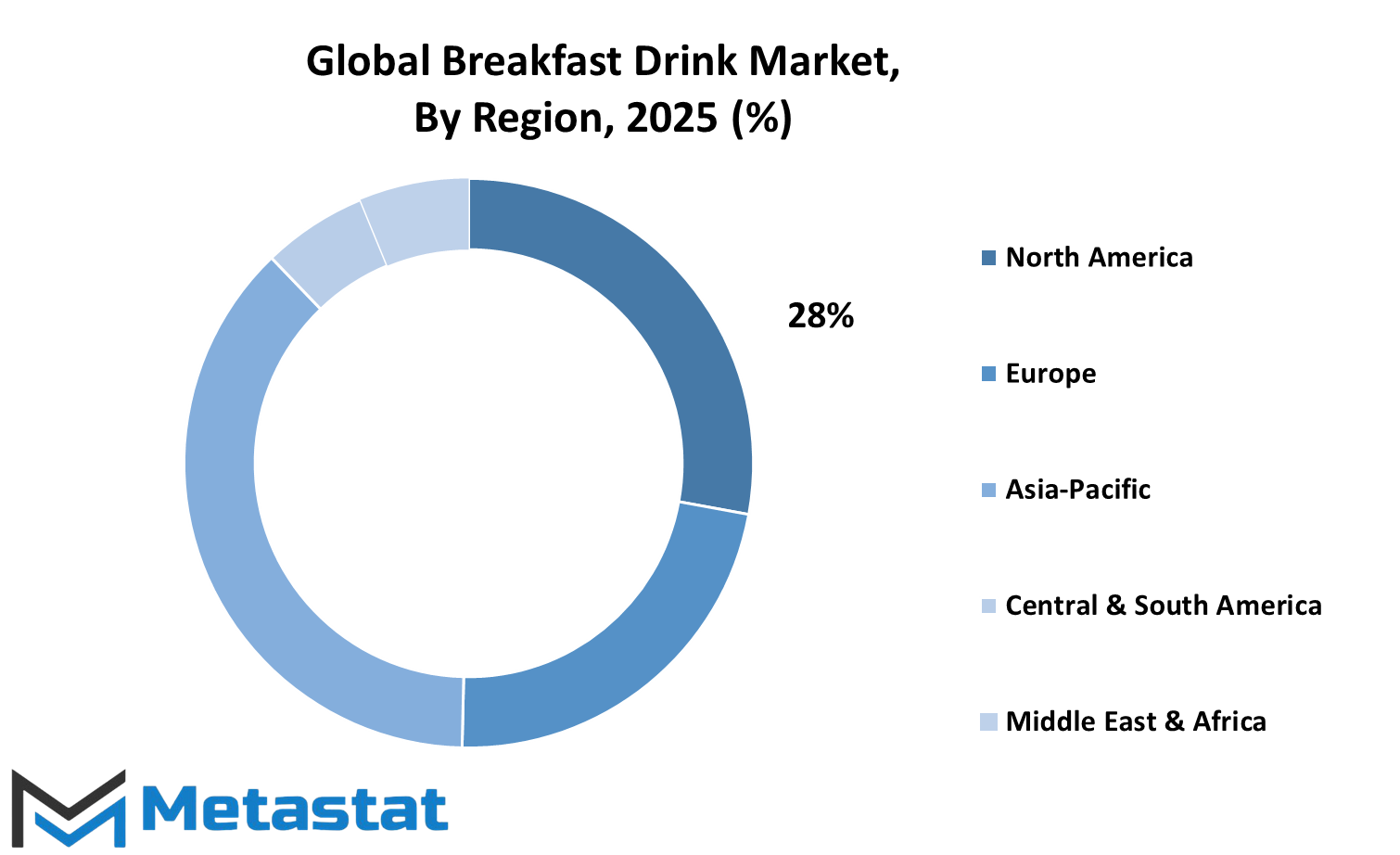
COMPETITIVE PLAYERS
The situation of the Global Breakfast Drink market is likely to witness some major changes in the coming years on account of lifestyle changes toward convenience and health. The fast pace of life for many consumers has made the breakfast drink an even more attractive proposition for those needing a quick and healthy start to their day. The breakfast drink acts as a perfect solution for a busy routine while safeguarding the health regime of the consumer; hence, that change in consumer habit will be the very future of the market. The reason manufacturers can earn high prices in these markets today is that they have forecasted the demand for breakfast drinks, and today they are setting the trends in the market.
Well-known brands have built a strong reputation for the nutrition and taste offered by their products: Carnation Breakfast Essentials from Nestlé and MOMA Foods. By keeping an emphasis on research and product development, they will ensure innovation to remain competitive. Rather than purely competing over taste or packaging, companies are also focusing more on ingredient quality, sustainability, and personalization. That means breakfast drinks might offer different plant-based blenders going forward and perhaps even drinks specific to each generation's appetite or dietary restrictions.
Huel Limited and Soylent are examples of companies setting trends through meal replacement drinks with complete nutritional value. Their success will open doors for others to formulate similar products that can cater to a full range of dietary preferences. In contrast, brands like OWYN and Orgain focus on clean ingredients for conscientious consumers, the trend is expected to grow as health-conscious alternatives to traditional breakfast items gain popularity.
On the other side of the equation, smaller players such as Jimmy Joy, Saturo, and Vitaline are targeting specific market areas aimed for breakfast substitutes. They might not yet possess the global clout of larger competitors, but through their unique offerings styled closely to consumer responses, they can have a competitive edge. As nutrition and function become attributes relevant to more clientele seeking out products, these growing brands will find more space to operate in.
Innovations, driven by newer technologies to enhance flavor, texture, and shelf life/increased shelf stability, are what lies ahead for the Global Breakfast Drink market. To accomplish prerogatives concerning wellness goals, it will not be a surprise to see health professionals in collaboration with these food-making companies producing beverages. As competition heats up, flexibility, creativity, and responsiveness to shifting customer expectations will be key for leaders to stay ahead.
Breakfast Drink Market Key Segments:
By Type
- Gluten-Free
- Starch
- Lactose-Free
- High Fiber
- High Protein
By Flavor
- Banana
- Strawberry
- Coffee
- Chocolate
- Others
By Distribution Channel
- Hypermarkets/Supermarkets
- Convenience Stores
- Specialty Stores
- Online Retail
Key Global Breakfast Drink Industry Players
- Nestlé S.A (Carnation Breakfast Essentials)
- MOMA Foods
- Sanitarium
- Anchor
- Arla Foods amba
- Soylent
- Huel Limited
- Orgain, Inc.
- Jimmy Joy
- OWYN
- Ample Foods
- Weetabix
- Vitaline
- Saturo
WHAT REPORT PROVIDES
- Full in-depth analysis of the parent Industry
- Important changes in market and its dynamics
- Segmentation details of the market
- Former, on-going, and projected market analysis in terms of volume and value
- Assessment of niche industry developments
- Market share analysis
- Key strategies of major players
- Emerging segments and regional growth potential



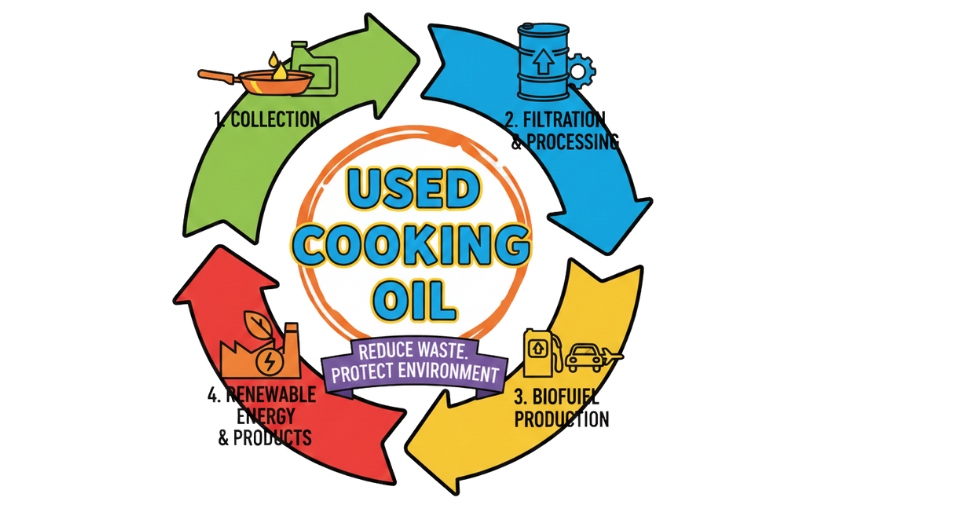
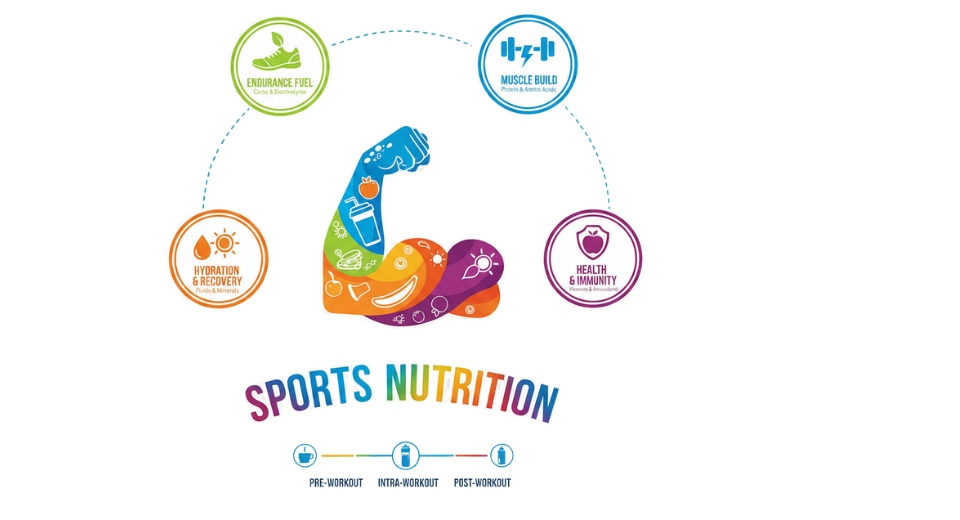
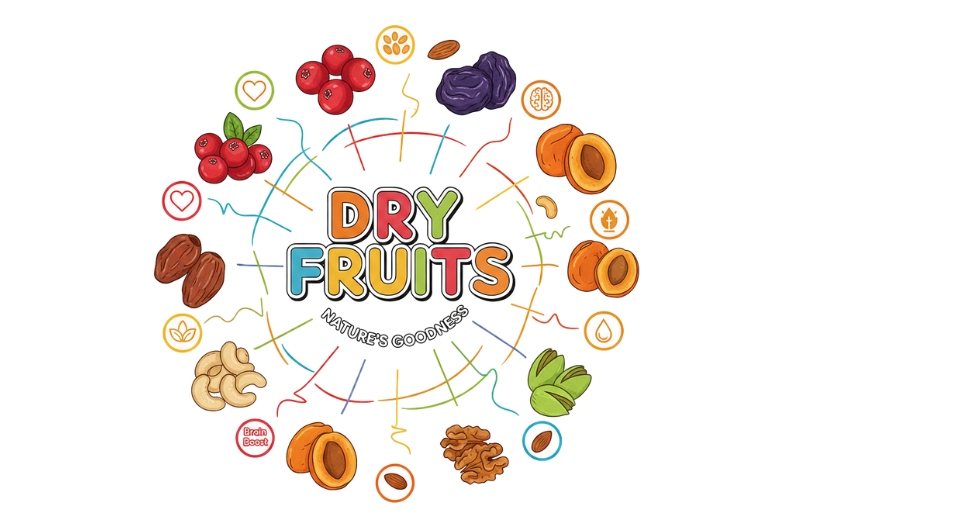


 US: +1 3023308252
US: +1 3023308252






